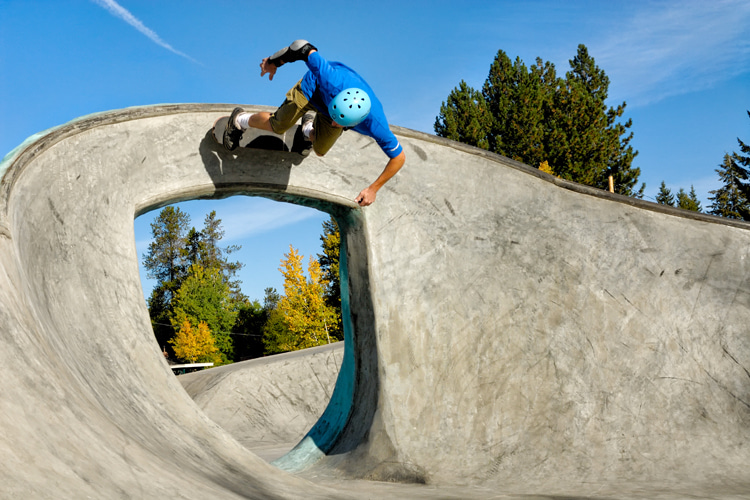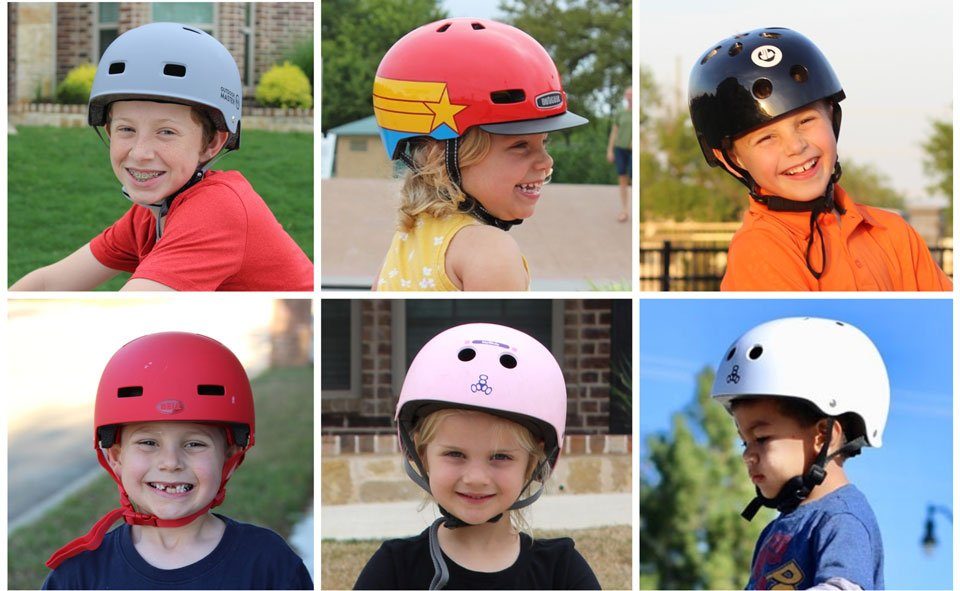Yes, you need a skateboard helmet to protect your head from potential injury while skating. Skateboarding can be a fun and thrilling activity, but it can also be dangerous if the proper safety precautions are not taken.
It’s essential to wear a helmet because it can greatly reduce the risk of serious head injuries or even death in case of an accident. Skateboard helmets come in different sizes, colors, and designs, and there is a wide range of options to choose from to suit your style. In this article, we will explore further why wearing a skateboard helmet is important and how it can keep you safe while enjoying the sport.

Credit: www.surfertoday.com
Benefits Of Wearing A Skateboard Helmet
Skateboarding is an exhilarating sport that fills the heart with excitement and joy. However, it comes with its own set of risks, with head injuries being at the top of the list. That’s why it’s crucial to wear a helmet when skateboarding.
In this section, we will discuss the benefits of wearing a skateboard helmet.
Protection From Head Injuries
One of the key benefits of wearing a skateboard helmet is protection from head injuries. The helmet serves as a shield, safeguarding your head from concussions, skull fractures, and other severe injuries. It acts as a shock absorber, diffusing the impact of a fall and reducing brain damage.
A helmet provides a protective barrier, shielding your skull and brain against hard surfaces and sharp debris.
Here are a few benefits of wearing a skateboard helmet to protect your head:
- Reduced risk of brain damage
- Protection against skull fractures
- Prevents cuts and scrapes on the scalp
- Provides a barrier against sharp objects on the ground
- Shields your head from hard surfaces such as concrete or pavement
Reduction Of Risk Of Concussions
Concussions are a severe type of head injury that can cause long-term damage if left untreated. However, a skateboard helmet can help reduce the risk of concussions. It acts as a cushion, absorbing the impact of a fall and minimizing the shock waves that are transmitted through your skull.
By decreasing the force of an impact, the helmet helps reduce the likelihood of damage to your brain.
Some benefits of wearing a skateboard helmet to reduce the risk of concussions include:
- Decreased severity of a brain injury
- Reduced transmission of shock waves through the skull
- Helps minimize damage to the brain
- Provides a cushion against impact
Improved Confidence And Performance
Wearing a skateboard helmet can also help improve your performance and boost your confidence. When you wear a helmet, you are less concerned about getting hurt or injured, which allows you to focus on your performance. You can perform better, ride faster, and take bigger risks when you feel confident and secure.
Here are a few benefits of wearing a skateboard helmet to improve your confidence and performance:
- Allows you to focus on your performance
- Increases your confidence
- Helps you take bigger risks
- Improves your ability to ride faster
Wearing a skateboard helmet is essential to ensure you are safe while skateboarding. It protects your head from severe injuries, reduces the risk of concussions, and improves your confidence and performance. By prioritizing safety and wearing a helmet, you can skate to your heart’s content while enjoying the sport without taking any unnecessary risks.
Skateboard Helmet Laws And Regulations
Skateboarding is an exciting activity that offers a rush of adrenaline, but safety plays a crucial role when participating in this sport. One of the primary ways to maintain safety is by using a skateboard helmet. However, do you need to wear a skateboard helmet legally?
Let’s dive into skateboard helmet laws and regulations.
Overview Of Global Helmet Laws
While skateboard helmet requirements vary based on location, many countries have enforced helmet laws for skateboarders.
- Australia: helmet use is mandatory for all skaters on roads and road-related areas.
- Canada: certain provinces have made helmets mandatory, while others have made helmets recommended.
- France: helmets are compulsory for all skateboarders in public areas.
- United states: helmet laws for skateboarding vary, with some states and cities enforcing mandatory helmet use for all ages, while others only require helmet use for minors.
It’s advisable to research the helmet laws for skateboarders in your area to ensure that you comply with the local regulations.
Consequences Of Not Wearing A Helmet
Not wearing a helmet while skateboarding can have dire consequences, including:
- Head injuries: injuries such as concussions, skull fractures, and traumatic brain injuries can occur while skateboarding without a helmet in case of falls or collisions.
- Fines: some areas enforce helmet laws, and violators can face hefty fines.
- Penalty points: in certain jurisdictions, skateboarders that violate helmet laws can receive points on their licenses, leading to license suspension or revocation.
- Litigation: negligence in wearing a helmet can result in legal investigations.
Comparison Of Skateboard Helmet Laws To Other Sports
As mentioned earlier, helmet laws for skateboarding vary globally. Here’s a comparison of skateboard helmet laws to other sports that are typically associated with helmets.
- Cycling: many areas have strict helmet laws for cyclists.
- Roller skating: depending on the state/city, helmet laws may be mandatory for minors only.
- Snowboarding/skiing: helmet laws are typically mandatory on most skiing/snowboarding slopes.
- Rock climbing: helmets are steadily becoming a requirement at many indoor rock climbing gyms.
It’s important to note that while not all sports require a helmet, wearing one is always recommended for personal safety.
Skateboard helmet laws and regulations vary globally. Nonetheless, it’s always important to wear a helmet while skateboarding to avoid serious injuries or legal repercussions.
Why Skaters Don't Wear Helmets Or Gear
How To Choose The Right Skateboard Helmet
Skateboarding is an exciting and thrilling activity that comes with a certain level of danger. Therefore, it’s essential to prioritize safety by wearing protective gear such as a skateboard helmet. But, not all helmets are created equal, so it’s crucial to choose the right one.
In this section of the blog post, we’ll discuss the key factors to consider when choosing a helmet, the different types of skateboard helmets available, and tips for fitting and adjusting a helmet.
Factors To Consider When Choosing A Helmet
When selecting a skateboard helmet, it’s essential to keep the following factors in mind:
- Certification: ensure that the helmet is certified by a reputable safety organization, such as astm or cpsc.
- Fit: the helmet should fit snugly, ensuring it doesn’t move around when in use.
- Comfort: the helmet should be comfortable enough for you to wear it for extended periods.
- Style: choose a style that reflects your personality and makes you feel comfortable.
Different Types Of Skateboard Helmets
There are several types of skateboard helmets, and each type is designed for a specific type of skateboarding.
- Halfshell: also known as a skateboarding helmet, a halfshell helmet is excellent for skateboarding and bmx riding.
- Full-face: this helmet provides maximum protection for downhill skateboarding and high-speed riding.
- Multi-sport: as the name suggests, this helmet is ideal for versatile use and can be utilized for a range of sports such as skateboarding, biking, and inline skating.
Tips For Fitting And Adjusting A Helmet
A properly fitting helmet is crucial for safety purposes.
- Measure your head: use a tape measure and measure your head’s circumference about an inch above your eyebrows.
- Check for fit: after wearing a helmet, check for gaps between the helmet and your skin. If there are significant gaps, it’s either too big for you, or you need to adjust the fit.
- Adjust the chinstrap: the chinstrap should fit snugly beneath your chin. You should be able to open your mouth and eat or drink without the helmet moving.
- Ensure proper position: wear your helmet low on your forehead, about one inch above your eyebrows.
Choosing the right skateboard helmet is crucial to ensure safety while skateboarding. Factors to consider include certification, fit, comfort, and style. The different types of skateboarding helmets include the halfshell, full-face, and multi-sport helmets. Finally, ensure that the helmet fits and is adjusted correctly to maximize its protective benefits.
Skateboard Helmet Maintenance
Skateboarding, like any other sport, requires proper protective gear. A helmet is an essential piece of kit that can safeguard you from serious injuries. But it is not just enough to buy a helmet – proper maintenance is required to ensure that it serves its purpose effectively.
In this post, we will discuss skateboard helmet maintenance in detail.
Cleaning And Storing Your Helmet
A clean helmet is a must when it comes to ensuring your safety. The accumulation of dirt, sweat, and bacteria can reduce the effectiveness of your helmet. Therefore, it is crucial to clean it after every use.
- Use a mild soap or shampoo, and warm water to wash the helmet.
- Avoid using abrasive materials that can scratch or damage the helmet’s outer shell.
- Rinse the helmet thoroughly to remove all the soap suds.
- Wipe the helmet dry with a clean towel.
- Store the helmet in a cool and dry place away from direct sunlight.
Signs Of Wear And Tear
No matter how well you maintain your helmet, it will eventually show signs of wear and tear.
- The helmet’s outer shell is cracked or dented.
- The helmet doesn’t fit well or is uncomfortable.
- The helmet’s padding is worn out or torn.
- The helmet has been in a crash or impact.
When To Replace Your Helmet
Knowing when to replace your helmet is just as important as wearing one. A damaged helmet can’t effectively protect you from head injuries.
- If the helmet has been in a crash, it’s time to replace it immediately.
- If the helmet is more than five years old, consider replacing it, even if it hasn’t been in a crash.
- If there are cracks or dents on the helmet’s outer shell, it’s time to replace it.
A skateboard helmet is a crucial piece of protective gear. Proper maintenance and knowing when to replace your helmet is necessary to ensure that it protects you effectively. Remember, a damaged helmet is as good as no helmet at all.
So keep your helmet clean, inspect it regularly for signs of wear and tear, and replace it when the time comes. Stay safe!
Conclusion
Based on the information above, the answer to whether or not you need a skateboard helmet is clear – yes, you absolutely do. The wide range of potential injuries that can occur from skateboarding without a helmet is simply too great to ignore.
Brain injuries, skull fractures, and spinal cord injuries can have disastrous and life-long consequences. While skateboarding can be an exhilarating and fun activity, it’s important to prioritize safety above all else. With the availability of so many great-looking and affordable helmets, there’s really no excuse not to protect your head when skateboarding.
Whether you’re a beginner or an experienced skater, a helmet should always be an essential part of your gear. Make sure you choose one that fits well and meets safety standards to keep yourself safe when out on your board.



